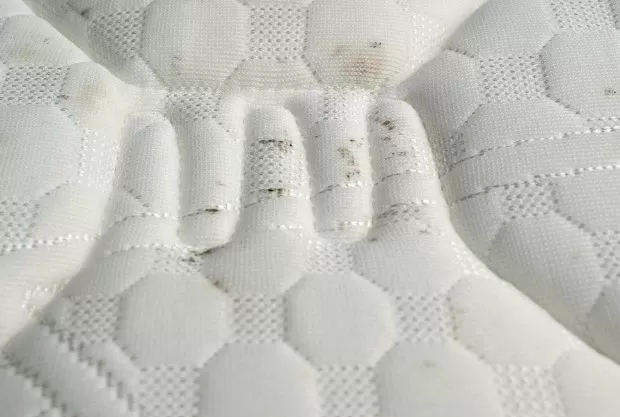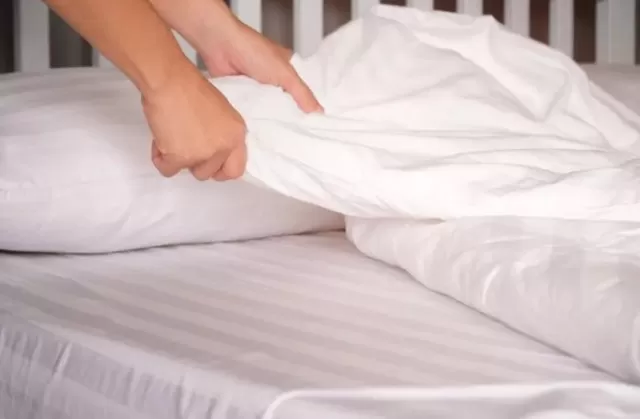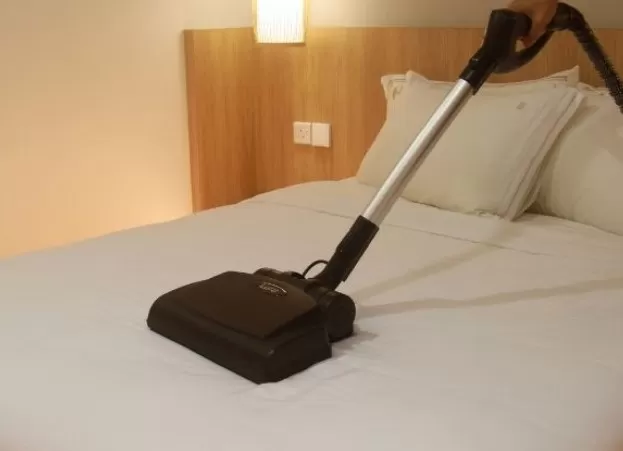How to Clean Mold from a Mattress in 6 Steps. Finding mold on a mattress can be alarming, as it could indicate a deeper issue within the core due to warm and humid conditions. If detected and treated promptly, small colonies of mold can be safely removed. However, it’s important to identify the type of mold before attempting any treatment.
Homeowners typically encounter three types of mold: allergenic, pathogenic, and toxic. While allergenic molds can be removed with home disinfectants, larger colonies and pathogenic molds may require professional removal. Toxic molds are the most harmful and should be handled by professionals who can safely dispose of affected materials.
Mold can cause various side effects, including a stuffy nose, sore throat, coughing, wheezing, burning eyes, or skin rash. Those with asthma or mold allergies may experience severe reactions. Immune-compromised individuals and people with chronic lung diseases may even develop lung infections from mold exposure.
This guide will teach you the proper way to remove mold from a mattress surface and how to determine if the mattress needs to be disposed of.
How Often Should You Clean a Mattress with Mold?

If mold is found on a mattress, it is important to take action immediately by either cleaning the affected area thoroughly or disposing of the mattress in accordance with local guidelines.
Mold spores will continue to grow as long as there are spores present and the mattress is in an environment with optimal temperature and humidity levels. The U.
S. Federal Emergency Management Agency advises that a porous item such as a mattress that has been wet for less than 48 hours may be able to be cleaned and disinfected.
However, after cleaning and drying the mattress completely, it is important to monitor it for several days for any signs of fungal growth or musty odor. If these signs reappear, it is recommended to dispose of the mattress.
In the case of a mattress that is wet, either with or without visible mold, due to contaminated floodwaters, it should be immediately discarded.
Ways to Wear Protective Gear and Improve Air Quality When Cleaning Mold from a Mattress

To minimize the risk of an allergic reaction to mold spores while cleaning, it’s recommended to wear protective gear, including eye protection, a mask, and rubber gloves.
Clothing that can be washed should be worn.
In addition to protective gear, consider placing an air purifier in the room to help capture mold spores that may become airborne during the cleaning process.
This can help improve the air quality in the room and reduce the spread of mold spores to other areas of the home.
Removing Bedding to Clean Mold from a Mattress

To eliminate any mold spores present on your bedding, remove all of it, including the mattress protector, and wash them in the hottest water suitable for the fabric.
Add a disinfectant that is safe to use on the fabric, such as chlorine bleach, pine oil disinfectant, or phenolic disinfectant (Lysol Laundry Sanitizer).
After washing, dry the bedding at the highest heat appropriate for the fabric to ensure any remaining mold spores are eliminated.
How to Vacuum a Mattress to Remove Mold

Use a handheld or floor vacuum with a hose and upholstery brush to thoroughly vacuum the entire surface of the mattress, including the areas with no visible mold.
Don’t forget to vacuum the sides of the mattress as well. If possible, turn the mattress over and repeat the vacuuming process on the other side to inspect for mold growth.
After vacuuming, take the vacuum outside to reduce the chances of spreading the mold spores and dispose of the disposable bag or dustbin into a tightly sealed trash bag.
Finally, dispose of the trash bag in an outdoor trash bin.
Cleaning Mold from a Mattress: Treating the Mold Growth
When cleaning mold from a mattress, it’s important to use a product that will kill the spores.
However, you shouldn’t saturate the mattress with too much wet solution as this could damage the mattress. It’s also important to note that cleaners won’t address any mold spores deep in the core of the mattress.
To treat mold growth on the surface of the mattress, you can mix a solution of equal parts isopropyl alcohol and water.
Dip a clean cloth into the solution and gently rub the moldy surface of the mattress in a circular motion. Once the area is free of visible mold, dip a cloth in clean water and use it to rinse the area.
How to Use a Fabric Sanitizing Spray on a Mattress
After you finish cleaning and rinsing the mattress, you can spray the affected area with a fabric sanitizing spray such as Febreze Fabric Antimicrobial.
This type of product is designed to prevent the growth of mold on soft surfaces for up to 14 days. Simply follow the instructions on the product label and spray the affected area evenly. Allow the area to air dry completely before replacing the bedding.
Thoroughly Dry the Mattress
To ensure the mattress is completely dry, use a circulating fan or move it to an area with direct sunlight.
This will help speed up the drying process and prevent any lingering moisture that can contribute to mold growth.
Tips for Preventing Mold on Your Mattress
Act quickly to clean up spills and accidents on your mattress.
Use air conditioning or a dehumidifier to lower the humidity in your home. Remove bedding regularly, especially during hot and humid seasons, to allow the mattress to air out and dry. Regularly check the mattress platform for mold that could spread to the mattress. If you need to store your mattress, use a climate-controlled space with low humidity.
https://www.youtube.com/watch?v=sm6gFCoUAGg
*The information is for reference only.